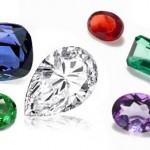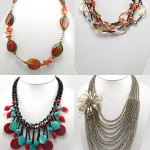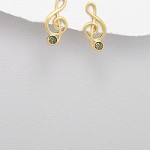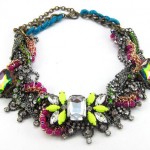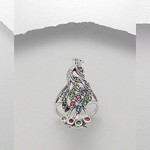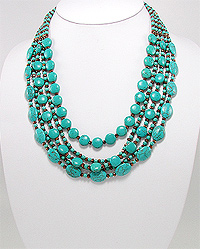 Turquoise is formed by aggregation of copper aluminum phosphate hydrate, under the certain heat and pressure for the great looking gemstone. The natural character of turquoise is normally soft or porous with various color present. The color of turquoise can be varied according to the presence of copper or iron inside. Higher percent of copper will give the vivid blue color while iron will create the softer green tones of the stone. The copper inside can also react with other substance to create the pattern of brown, yellow ochre and black matrix inside the stone, which can be use as the stone signature.
Turquoise is formed by aggregation of copper aluminum phosphate hydrate, under the certain heat and pressure for the great looking gemstone. The natural character of turquoise is normally soft or porous with various color present. The color of turquoise can be varied according to the presence of copper or iron inside. Higher percent of copper will give the vivid blue color while iron will create the softer green tones of the stone. The copper inside can also react with other substance to create the pattern of brown, yellow ochre and black matrix inside the stone, which can be use as the stone signature.
There are different types of turquoise available in the jewelry market, as follow.
1. Sleeping Beauty Turquoise: from the Sleeping Beauty mines in Arizona, the United State. The color is generally in the vivid blue with is also known as a “Persian color”. Many of the turquoise from this area is quite soft, which will pass through the Zachery process to made the stone denser, to reduce porosity and stabilize to stone and color for the use in jewelry world.
2. Stabilized Turquoise: for this type, the stone is already chemically treated by adding an epoxy resin for increasing its hardness and enhanced the stone color at the same time. The stabilized turquoise is a popular choice for jewelry maker as it is easy to handle and able to use for many style and design of turquoise jewelry.
3. Chalk Turquoise: the stone product from China. It is naturally come in white with porous inside. The stabilization process needs to be done for this turquoise type and then dye into different color shape. The lively shades like blue, apple green, lime green and fuchsia pink is quite popular for dyingprocess. Chalk turquoise is naturally come in white as they have not contained copper inside. Therefore, you can create different colors of turquoise base on this turquoise type. It’s a popular stone for jewelry maker as it can mix with other gemstones according to its dye color. The natural hardness is another good point for using as a gemstone piece.
4. African Turquoise: this turquoise has an exotic blend of green based color and dark matrix which make its unique character for the use as a fine turquoise substitute.
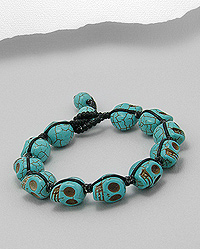 5. Yellow Turquoise: with the subtle blend of gold, browns and black colors which is generally came from the color of quartz and jasper gemstone from the same mine. This yellow turquoise is considered as a wonderful piece of gemstone for a fall-theme jewelry piece. If you love yellow, you should look for the yellow turquoise as one of your jewelry collection.
5. Yellow Turquoise: with the subtle blend of gold, browns and black colors which is generally came from the color of quartz and jasper gemstone from the same mine. This yellow turquoise is considered as a wonderful piece of gemstone for a fall-theme jewelry piece. If you love yellow, you should look for the yellow turquoise as one of your jewelry collection.
6. White Turquoise: for the stone that is known as the white turquoise is actually a white magnesite. The stone is white with either a brown or black matrix inside. The matrix pattern can resemble a dry creek beds or crackled antique pottery. This stone is generally dyed with the dark shade like blue and green with the black or brown matrix pattern inside, under the common name of “Tibetan turquoise”.
7. Howlite and Mountain “jade”: Howlite is an affordable turquoise substitute. Howlite is found in the continental area with the turquoise-blue color as its natural color. However, the color of how lite is not permanent, it is recommended for color stabilizing process before use in the industrial part. The mountain jade is actually a high-grade dolomite marble that is mined in Asia. It can be dye with a variety of colors like bright turquoise blue for the mimic form of the real turquoise. Both Howlite and Mountain jade are both great look if you want to save your money on turquoise jewelry, but still get the look of turquoise in your jewelry pieces.
Now, you already know about different types of turquoise, it’s time to learn about the turquoise buying tips.
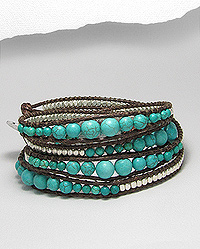 The best thing to guarantee that you will get the high quality turquoise is to get a good relationship with your turquoise vendor. This is always the best way for most business type. The good relationship means that you can trust for the products that the vendor sells to you. Otherwise, you might be the fake or mimic form of turquoise instead of the real one. If you don’t know the vendor before, ask them the questions. All possible questions that you need to know, not only just about the nature of the stone, but also about their service and knowledge on gemstone.
The best thing to guarantee that you will get the high quality turquoise is to get a good relationship with your turquoise vendor. This is always the best way for most business type. The good relationship means that you can trust for the products that the vendor sells to you. Otherwise, you might be the fake or mimic form of turquoise instead of the real one. If you don’t know the vendor before, ask them the questions. All possible questions that you need to know, not only just about the nature of the stone, but also about their service and knowledge on gemstone.
